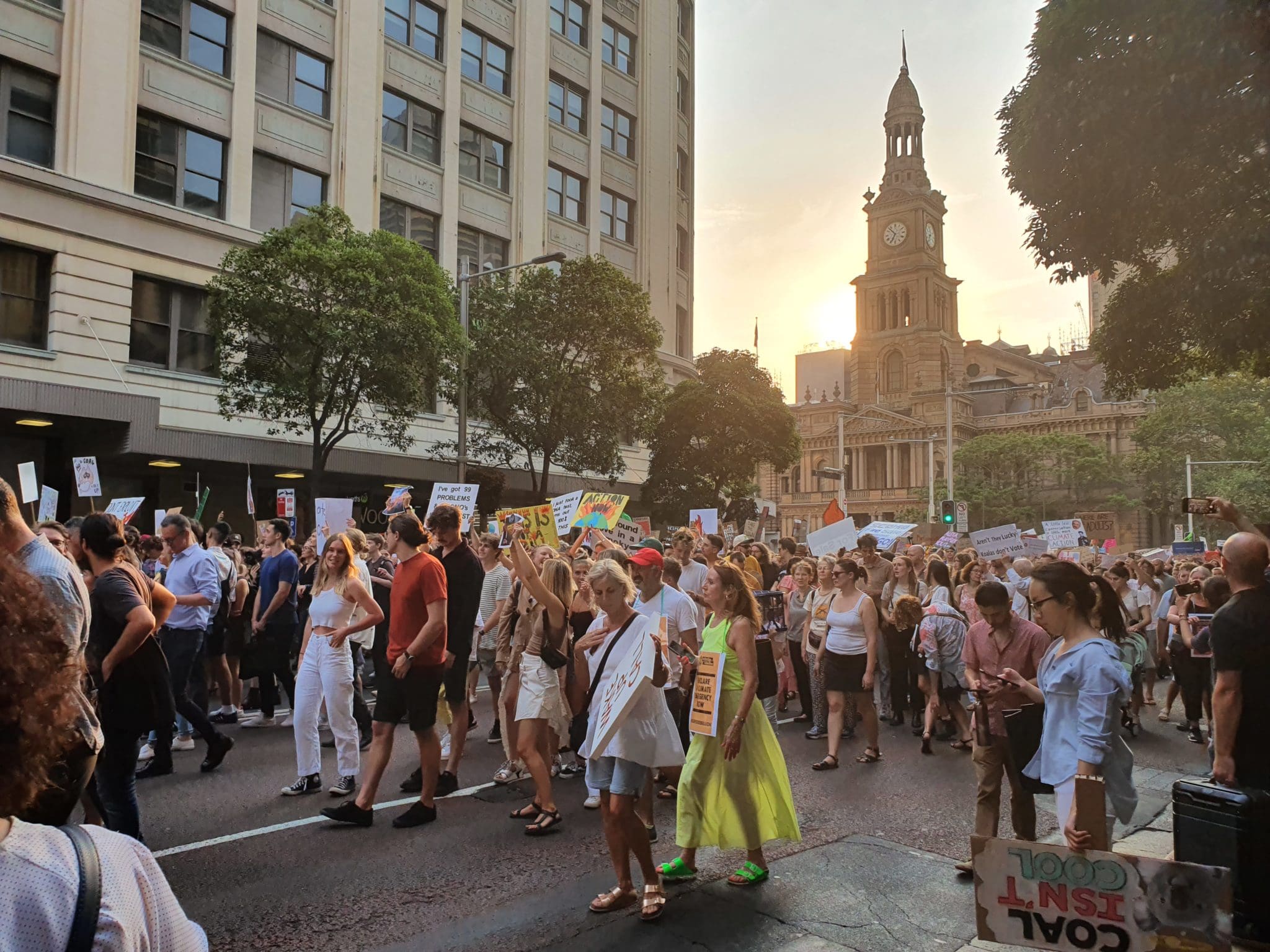An estimated 35,000 people packed out Town Hall and the surrounding streets on Friday night, calling for Prime Minister Scott Morrison to be sacked and for action on climate change. Hosted by Uni Students for Climate Justice and Extinction Rebellion Sydney, the protest built upon December’s “Sydney is Choking” rally, which drew upwards of 20,000 people to the streets. This protest was more direct though – not just an expression of exhaustion and anger, but one which was targeted explicitly at Prime Minister Scott Morrison.
The Welcome to Country was emotional and highlighted how traumatic the bushfires have been all over Australia, but especially for First Nations people who have suffered an irreparable loss of songlines, bushland and native wildlife. This was a theme echoed in the other speeches, a sign of a movement beginning to engage more deeply with First Nations knowledge, experience, and leadership.
Chair of the rally was Gumbaynggirr man and Uni Students for Climate Justice co-convenor Gavin Stanbrook. Stanbrook kept the energy alive between speeches and the focus firmly on the need for justice, especially for First Nations communities at the forefront of the climate crisis. In a final message to the crowd, Stanbrook urged all protesters to show up at the Invasion Day rally on the 26th of January.
Greens MP Mehreen Faruqi strongly articulated this call for justice, saying that she has never been so angry in her life. Calling for further action, she commented on the strength of the growing climate movement.
“As our movement grows our actions must grow more bold and radical to shake Scott Morrison and his mates out of their climate denying stupor and out of government.”
“We are dealing with a coordinated campaign of disinformation designed to shift the blame for the fires, confuse the public and let the big polluters off the hook… We cannot allow billionaires and their puppet politicians to shape our futures.”
Faruqi told the crowd that they can choose to occupy parliaments and not leave until meaningful change occurs.
Ambrose Hayes spoke on behalf of School Strike for Climate, and reminded the crowd of the three demands of the Australian strikers movement: “no new coal, oil or gas projects, no coal exports by 2030 and a just tradition and job creation for all fossil fuel workers and their communities.”
“How many more lives and homes will be lost before this government takes action?” said Hayes. “This is no time for cowardice, this is time for action… The only thing lacking is political will.”
Jim Casey, a professional firefighter and former Greens candidate, says there are many factors contributing to these fires. “It’s bad because it’s hot, it’s dry, and there’s a lot of fuel,” he said in his speech to the crowd.
Casey added that while he fully expects the funding cuts to be reversed, it won’t be enough if there isn’t significant investment in professional firefighting. He criticised the expectation that people should use their annual leave and long service leave and give up months of paid employment in order to volunteer for the Rural Fire Services as completely unsustainable.
“It’s not a question of fundraising,” he says, or of celebrities throwing cash at the problem and promoting passion speeches at the Golden Globes. “We are a rich country,” but damage management is more expensive than preventative measures. “The government needs to let us do our job properly.”
13-year-old Izzy Raj-Seppings, who was arrested outside Kirribilli House in December, spoke angrily and eloquently on the microphone, prompting chants of “nothing” from the crowd as she asked what Scott Morrison was doing to support firefighters and combat climate change when our land is blazing and our skies are turning red. She ended the speech with her catch-cry: “Watch us fight. Watch us win.”
With chants of “hey hey, ho ho, ScoMo has got to go,” and “the liar, from the shire, our country is on fire,” protesters began the march to Hyde Park, past the Commonwealth Government offices and NSW State Parliament.
The next actions have been called for the weeks ahead, with a follow-up rally next week, and a National Day of Action on the 22nd of February. If this popular energy can be sustained, the new year may represent a turning point in the Australian climate movement.





